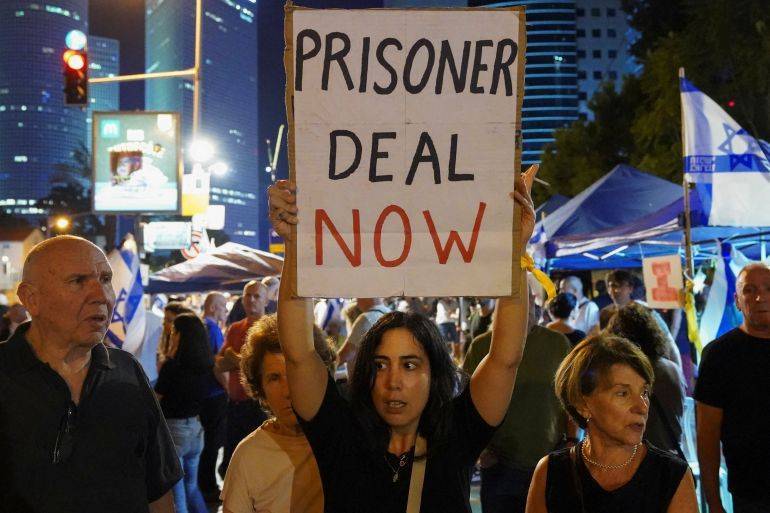American newspapers reported last night that a new prisoner exchange deal between Israel and Hamas is nearing completion, which includes a ceasefire in the Gaza Strip, according to a translated report by "Arab Post."
The "New York Times" revealed that the draft agreement being formulated includes the phased release of Israeli prisoners held by Hamas in exchange for a two-month halt to Israeli military attacks. Meanwhile, the "Wall Street Journal" indicated that the duration could extend to four months, with international guarantees for a comprehensive ceasefire in Gaza by the end of this period.
According to the newspaper, American officials stated that negotiators are close to reaching an agreement that could be finalized within the next two weeks. It noted that a draft agreement combining proposals from Hamas and Israel has recently been presented, with talks ongoing in Paris today between CIA Director William Burns and officials from Qatar, Egypt, and Tel Aviv.
The newspaper reported that negotiators expressed cautious optimism that a final agreement was within reach, despite significant disagreements that still need resolution. Although the potential deal would not include a permanent ceasefire as demanded by Hamas in exchange for the release of Israeli prisoners, officials close to the negotiations believe that if Israel stops the war for two months, it is likely that hostilities would not resume in the same manner as before, allowing for a window of further diplomacy that might lead to a broader solution.
### Three-Track Talks
The same newspaper indicated in another report that American, Israeli, and Arab officials are working to formulate three parallel and interconnected agreements that envision a post-war phase along with commitments to establish a Palestinian state.
The first track of discussions focuses on reaching a ceasefire, including the release of 100 Israeli prisoners held by resistance groups in Gaza in exchange for thousands of Palestinian detainees in Israeli prisons.
The second track focuses on reforming the Palestinian Authority, which governs parts of the West Bank. American and Arab officials are exploring leadership reforms to enable it to take control of Gaza after the war.
The third track sees American and Saudi officials pressuring Israel to agree to the terms for establishing a Palestinian state in exchange for Saudi Arabia formalizing its relations with it, according to the newspaper.
The report noted that there are significant obstacles in each track, with the most critical being that the Israeli government has stated it will not allow complete Palestinian sovereignty, raising doubts about whether progress can be made on major fronts.
Officials are discussing many ideas, most of which are temporary or long-term, or are strongly opposed by some parties. These ideas include: First, transferring powers within the Palestinian Authority from the current president, Mahmoud Abbas, to a new prime minister while retaining a ceremonial role; second, sending an Arab peacekeeping force to support the new Palestinian administration; and third, issuing a resolution in the Security Council, supported by the United States, that would recognize the rights of Palestinians to establish their state.
The "Wall Street Journal" mentioned that the new initiative, led by Arab mediation, includes a four-month ceasefire. They reported that Egyptian officials indicated the proposal includes an initial truce of six weeks, during which Hamas would release women and the elderly in exchange for Israel freeing a significant number of Palestinian prisoners and increasing aid flow to Gaza.
According to the newspaper, the second phase of the truce involves Hamas releasing Israeli female conscripts, followed by the release of male soldiers and the bodies of the deceased. In exchange, Hamas would receive guarantees from international parties, including the United States, that a comprehensive agreement leading to a permanent end to the war would be reached during the ceasefire.




